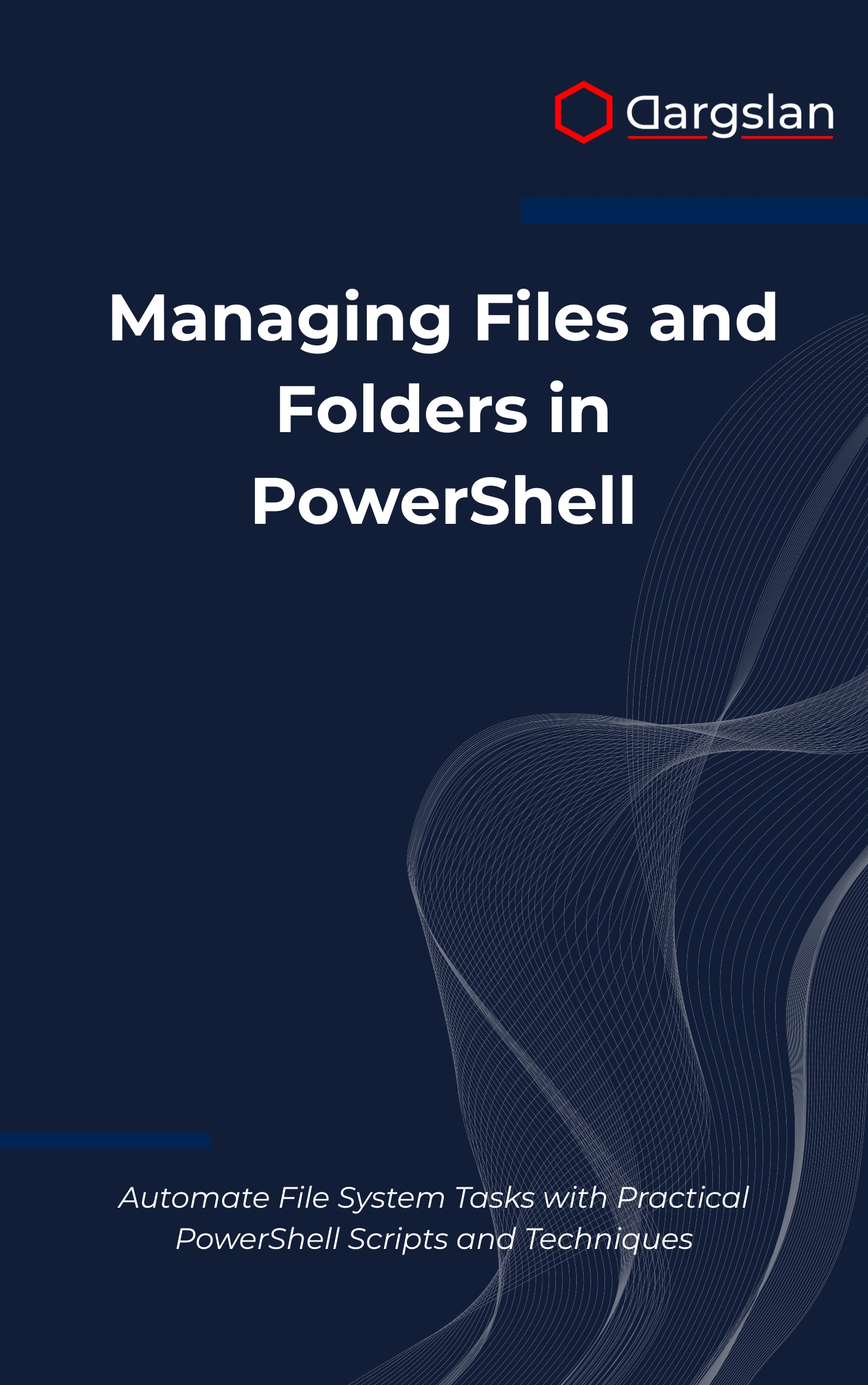Managing Files and Folders in PowerShell
Managing Files and Folders in PowerShell,Automate file and folder operations using PowerShell scripts for efficiency.

Imagine turning hours of repetitive file renames, copies, and audits into a few precise, reliable commands. If you’re ready to eliminate manual drudgery and scale your workflows with confidence, this expert PowerShell resource will help you automate file system tasks the right way—cleanly, safely, and at enterprise scale.
Automate File System Tasks with Practical PowerShell Scripts and Techniques
Overview
Managing Files and Folders in PowerShell is a practical, production-ready IT book and programming guide designed to help you automate complex file system routines with clarity and control. This technical book shows how to master PowerShell file operations and automated file management while navigating the nuances of file system navigation, content manipulation, permission management, and search algorithms with confidence.
Inside, you’ll learn how to apply robust error handling, build dependable logging frameworks, and implement backup automation that scales. You’ll explore script optimization, bulk operations, and file attributes for smarter processing, alongside security management and workflow automation to unify your end-to-end processes. Automate File System Tasks with Practical PowerShell Scripts and Techniques provides a complete playbook for PowerShell in real environments where accuracy, performance, and auditability matter.
Who This Book Is For
- IT administrators and help desk engineers who want to replace manual file tasks with reusable scripts that reduce errors and free up time for higher-impact work.
- DevOps and platform teams seeking consistent, compliant file handling across servers and environments, with clear guidance on logging, auditing, and policy enforcement.
- Analysts, power users, and technical specialists eager to boost productivity, automate routine chores, and build confidence tackling enterprise-scale file workflows.
Key Lessons and Takeaways
- Build a rock-solid foundation in file and folder operations—create, copy, move, delete, archive, and rename—using patterns that scale across thousands of items.
- Design resilient scripts with defensive techniques, including granular error handling, verbose diagnostics, and structured logging frameworks that support audits and compliance.
- Implement end-to-end workflow automation by combining search algorithms, permission management, and backup automation into cohesive, repeatable pipelines.
Why You’ll Love This Book
This guide focuses on clarity, step-by-step instruction, and immediately usable examples so you can apply each concept the same day you read it. Every technique is accompanied by real-world scenarios, checklists, and best practices refined in production, giving you the confidence to automate responsibly in sensitive environments. You’ll find pragmatic strategies for script optimization and bulk operations, plus tips for security management that protect data without slowing you down.
How to Get the Most Out of It
- Start with the core chapters on PowerShell file operations and file system navigation to establish consistent patterns, then progress to permission management, content manipulation, and workflow automation.
- Mirror the book’s examples in your environment using small, isolated test directories; add logging and safeguards early so scaling to large data sets remains safe and predictable.
- Build mini-projects: a daily backup automation task with verification and retention; a reporting job that inventories file attributes and permissions; and a cleanup pipeline that uses search algorithms to archive or delete by policy.
How This Book Elevates Your Automation Practice
Beyond the basics, you’ll learn to think in patterns that simplify complexity: reusable functions, parameterized scripts, and idempotent routines that behave consistently no matter how many times they run. You’ll see how to apply metadata and file attributes to drive decisions, how to validate inputs and outputs to prevent surprises, and how to combine modules into a cohesive toolkit tailored to your organization’s standards.
The guidance emphasizes speed and safety: script optimization techniques that cut runtime, structured logging that makes troubleshooting straightforward, and guardrails that keep production changes controlled. Whether you’re building a one-off utility or a repeatable enterprise workflow, you’ll gain the habits that make automation maintainable over time.
Real-World Scenarios You’ll Master
- Compliance-ready backups with rotation policies, integrity checks, and clear audit trails for regulated environments.
- Bulk operations that restructure directory trees, normalize names, and reconcile duplicates using deterministic rules.
- Search and classify at scale by combining content manipulation, search algorithms, and file attributes to route documents to the right teams or systems.
- Security-first permission management that maps business roles to access levels, detects drift, and logs every change.
Answers to Challenges You Face Every Day
If you’ve wrestled with scripts that work on a test folder but fail in production, this book shows how to code for real-world unpredictability. You’ll learn to anticipate locked files, long paths, and odd encodings, and to respond with graceful retries, fallbacks, and detailed diagnostics. The result is automation you can trust—even when the file system throws you curveballs.
Proof You Can Scale Without Chaos
From small office shares to sprawling enterprise repositories, you’ll build pipelines that handle volume, variability, and verification. The book’s end-to-end examples demonstrate how to stitch together discovery, transformation, and delivery steps into one coherent flow—reducing manual touchpoints while increasing visibility and control.
Get Your Copy
Stop clicking through folders and start orchestrating them. If you’re serious about reliability, speed, and clean audit trails, this resource will pay for itself the first time you automate a high-volume job.




